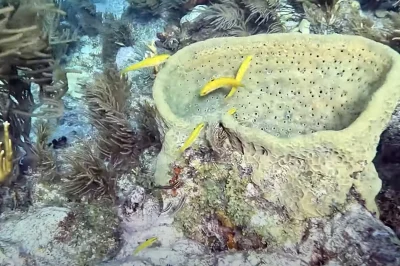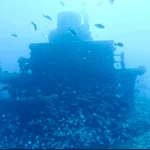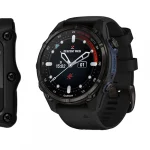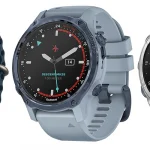Mastering the Pre-Dive Ritual

Table of Contents
- Mastering the Pre-Dive Ritual
- Dispelling Safety Myths: What You Really Need to Know
- Avoiding the Pitfalls: Learning from Equipment Failures
- The Evolution of Diving Gear: What’s Trending Now
- The Science of Safety: How Effective Are Pre-Dive Checks?
- 7 Essentials Every Diver Should Double-Check
- Key Largo’s Underwater Wonders: Safety Tips Specific to Local Diving
- Maximizing Your Dive Time: Preventing Equipment Malfunctions
Introduction
Diving into the mesmerizing underwater world of Key Largo is an exhilarating experience, but ensuring safety through a rigorous pre-dive check can elevate your adventure from good to great. Leveraging data-driven insights and industry expertise, this guide walks you through a comprehensive 7-point system designed to mitigate common equipment mishaps that could dampen your diving experience. Engage with this carefully structured blueprint to optimise your safety and enjoyment under the sea.
Mastering the Pre-Dive Ritual
Dispelling Safety Myths: What You Really Need to Know
Many misconceptions surround scuba diving safety gear, which can deter beginners or even seasoned divers from enjoying a safe and fulfilling experience. Addressing these myths is crucial for ensuring divers are well-informed about their equipment and the safety protocols necessary while diving in places like Key Largo.
Gear Costs and Accessibility:
Myth: New divers must invest heavily in expensive equipment upfront.
Truth: Most dive shops provide rental gear during training, allowing divers to explore without committing large sums initially. Typically, divers only need to purchase personal-fit items like masks, snorkels, and fins, with other equipment being acquired gradually.
Weight Management:
Myth: Divers need to be naturally buoyant; gear is too light.
Truth: Contrary to popular belief, divers typically require lead weights to achieve proper buoyancy. Modern gear is designed with buoyancy compensators and quick-release weight systems, providing divers with the flexibility needed for safe underwater navigation.
Air Supply Monitoring:
Myth: Running out of air is unavoidable due to unreliable gauges.
Truth: Effective air management practices are taught during training, including the use of pressure gauges and the “rule of thirds.” Equipment malfunctions are rare compared to human errors, such as panic during dives or poor planning.
Equipment Reliability Concerns:
Myth: Modern scuba gear is infallible, eliminating safety risks.
Truth: While the latest equipment is highly reliable, many incidents stem from improper use rather than mechanical failures. Regular maintenance and adherence to safety protocols are essential for maximising safety.
Dive Planning Limitations:
Myth: No-decompression limits restrict tank usage to shallow depths.
Truth: Advances in diving technology, including modern dive computers and larger tanks, allow for safe management of depth and time. This dispels the outdated notion that divers are constrained to shallow depths.
Dispelling Safety Myths: What You Really Need to Know
Common Equipment Failures in Scuba Diving
When diving in Key Largo, equipment reliability is paramount. Divers frequently encounter specific equipment failures that can compromise their safety and enjoyment. Among these, regulator malfunctions, especially free-flows, are significant concerns. These occur due to factors such as sticking valve poppets, incorrect interstage pressure settings, or contaminants in filters. Additionally, BC inflation failures are common, often caused by stuck or leaking inflators, particularly at the corrugated hose connection, leading to gradual air loss during dives.
Other recurring problems include:
- Mouthpiece detachment from regulators.
- Cracked pressure gauges or air leaks from damaged springs.
- Mask and fin breakages during entry or exit.
- Dive computer battery failures, risking sudden shutdowns.
Strategies to Mitigate Failures
To enhance safety and prevent equipment failures, divers should adopt comprehensive strategies:
- Pre-Dive Gear Checks
- Test inflation systems: Verify that BC inflators and dump valves operate correctly.
- Inspect regulators: Look for signs of wear, corrosion, or restricted airflow, rinsing regulators in freshwater after saltwater exposure.
- Check dive computer batteries: Replace any low-power batteries before dives, as sudden failures can jeopardise monitoring depth.
- Emergency Protocols
- Free-flow response: If a regulator free-flows, stay calm, switch to the backup regulator (octopus), and abort the dive.
- Buoyancy loss: Use surface signals, such as an inflatable signal bag, to recover if buoyancy control is compromised.
- Maintenance and Training
- Service gear regularly: Lubricate moving parts and replace O-rings to prevent friction-induced binding.
- Obtain technical diving certification: For advanced dives, like those on Key Largo’s wrecks, advanced training decreases dependency on malfunction-prone equipment.
- Carry spare parts: Keep O-rings, inflator mechanisms, and backup batteries handy for critical components.
- Environmental Precautions
- Rinse gear thoroughly: Prevent corrosion after saltwater exposure, which can clog filters and increase free-flow risks.
- Avoid overloading BCs: High stress on inflators, particularly near corrugated hoses, can exacerbate leak issues.
By prioritising proactive checks and contingency planning, divers can minimise the risks associated with equipment failures, ensuring safer and more enjoyable diving experiences in the beautiful waters of Key Largo.
Avoiding the Pitfalls: Learning from Equipment Failures
Scuba diving equipment in 2025 is evolving rapidly, driven by advancements in technology, sustainability, and ergonomic design. Key trends include smart regulators, mobility-enhancing gear, intelligent dive computers, and eco-conscious materials. Exploring these innovations can enhance your scuba diving experience, especially for enthusiasts visiting Key Largo.
Smart Regulators and Sensors
Aqualung’s Aquasense sets the standard for 2025 with an electronic regulator featuring a long-lasting battery, sonar communication, built-in black box recorder, and advanced sensors for monitoring environmental conditions. For tech-focused divers, the APEKS XTX50 remains a top choice for reliability and cold-water performance.
Underwater Mobility and Accessories
The SEABOB F5 underwater scooter revolutionises propulsion with high speed, safety cut-offs, and effortless manoeuvrability for deep dives. Customisation is prioritised with the Nexmulti Functiontrim Bar, allowing divers to easily attach accessories like D-rings and weights to their gear webbing.
Intelligent Dive Computers
Cressi’s Raffaello leads the pack with a backlit, large-display screen, multi-gas support, and intuitive controls for both recreational and technical diving. The Shearwater Perdix 2, favoured by professionals, combines precision with a user-friendly interface. A growing trend is carrying two dive computers for redundancy, emphasising safety during dives.
Eco-Friendly and Lightweight Gear
- Akona Mesh Sun Shirt: Offers SPF 50+ protection, breathable mesh, and anti-microbial properties in lightweight polyester-spandex blends.
- Aqualung Oceanwings: A sleek, streamlined dive suit tested for freediving efficiency, currently in prototype stages.
- Higher-Pressure Tanks: Emerging innovations aim for smaller, lighter cylinders optimised for extended range.
Full-Face Masks and Durable BCDs
The Ocean Reef Neptune Space G dominates full-face masks with fog-proof design and integrated communication systems. For buoyancy control devices (BCDs), the Cressi Travelight balances travel-friendly compactness with robust performance, making them ideal for divers on the go.
Sustainable and Modular Design
Manufacturers prioritise recyclable materials and modular components, such as the Nexmulti bar, to reduce waste and enhance versatility. Dive wear like Waterlust base layers emphasises ethical production and thermal regulation, reflecting a commitment to sustainability in diving gear.
The Evolution of Diving Gear: What’s Trending Now
Pre-Dive Checks: Evidence of Effectiveness
Structured pre-dive checks play a critical role in enhancing scuba diving safety, a claim supported by various scientific studies. These checks not only help in identifying equipment issues before dives but also significantly reduce mishaps associated with human error. Here’s a detailed look at the statistics, key studies, and practical advantages of implementing a thorough pre-dive checklist.
Key Statistics on Effectiveness
- Mishap rates: Divers using a written checklist report approximately 6.8 unsafe conditions per 100 dives, a stark contrast to 12.8 to 15.2 for divers relying on memory or no checklist [Source: PMC].
- In controlled studies, pre-dive checklist users experienced a decrease of 36% in major mishaps and 32% overall compared to those who did not use checklists [Source: OUP].
- On average, using structured checks prevents one mishap every 25 dives [Source: DAN].
Critical Studies
- 2014 DAN Study: This randomised controlled trial demonstrated that structured checks lead to fewer equipment errors and reduced incidents of human error among divers [Source: DAN].
- 2015 Intervention Study: This study found distinctive advantages in using pre-dive checklists, indicating their effectiveness in reducing the frequency of mishaps [Source: PubMed].
- 2017 Cohort Analysis: This analysis confirmed that divers using written checklists enjoyed safer diving experiences, yielding a lower mishap rate compared to those without written checks [Source: PMC].
Benefits of Pre-Dive Checks
- Public Health Impact: Reducing diving-related mishaps can lower treatment costs and decrease lost productivity due to injuries [Source: DAN].
- Procedural Consistency: Standardised checks ensure all critical steps, from equipment maintenance to dive planning, are systematically followed.
- Error Reduction: Effective checklists target known risk factors, helping prevent issues related to depth, gas management, and general safety protocols.
Dive Computers
- Diving Computers for Female Divers
- Wreck Diving Computers
- Beginner Diving Computers
- Low-Light Diving Computers
- Technical Diving Computers
- Freediving Computers
- Underwater Photography Diving Computers
- Cold-Water Diving Computers
- Travel-Friendly Diving Computers
- Multi-sport Diving Computers
- Budget-Friendly Diving Computers
- Advanced Recreational Diving Computers
- Smartwatch-Compatible Diving Computers
- Child-Friendly Diving Computers
- Military or Professional Diving Computers
The Science of Safety: How Effective Are Pre-Dive Checks?
Pre-Dive Safety Checks for Scuba Diving in Key Largo
Scuba divers prepare meticulously before each dive to ensure safety and efficiency. Several standardised methods, such as BWARF or ABCDE, help divers perform essential pre-dive checks, covering both equipment and buddy readiness.
Structured Check Models
Using these methods allows for a systematic approach:
- BWARF:
- Buoyancy: Confirm BCD inflation/deflation functionality.
- Weights: Verify secure placement and proper distribution.
- Air: Inspect tank valve (fully open), regulators, and SPG readings.
- Releases: Practise emergency gear removal techniques.
- Final OK: Confirm readiness before entering the water.
- ABCDE:
- Air: Check tank valve, regulators, and SPG stability during breathing.
- BCD: Test inflation/deflation and secure hose clips.
- Computer: Ensure dive mode is active with correct settings.
- Dive Equipment: Inspect masks, fins, and alternate air sources.
Buddy Safety Check Breakdown
Key components of the pre-dive buddy check include:
- Air Supply: Breathe simultaneously from primary regulators to stress-test airflow and monitor SPG stability.
- Regulator Checks: Ensure alternate air sources are accessible and properly secured.
- Equipment Streamlining: Tuck SPGs and hoses to avoid environmental damage or entanglement risks.
Equipment and Environmental Readiness
- Weight System: Ensure correct weights are properly attached to prevent buoyancy errors.
- Streamlined Gear: Minimise dangling hoses to protect marine life, a critical consideration in Key Largo’s sensitive ecosystems.
Key Largo-Specific Considerations
When diving in Key Largo, divers should keep several local factors in mind:
- Dive Site Preparation: Select sites appropriate to your certification level, as currents and conditions vary.
- Local Refresher Courses: Many Key Largo dive shops offer refresher training covering dive planning, buddy communication, and lost procedure drills.
- Boat Dive Readiness: Confirm boat safety protocols and gear setup, especially for charter vessels.
By integrating these steps, divers can mitigate risks and align with local best practices in Key Largo’s popular dive destinations.
7 Essentials Every Diver Should Double-Check
Pre-Dive Planning and Gear Preparation
Know your limits by staying within your certification levels and factoring in your recent dive history. Conduct thorough gear checks for masks, fins, buoyancy control devices (BCDs), regulators, and dive computers to ensure functionality and safety. Research site conditions, including currents, depth, and the types of marine life you might encounter.
Develop a dive plan with your buddy that outlines maximum depth, bottom time, and emergency signals. Always verify current weather and water visibility conditions before entering the water. This planning stage is crucial to ensure not only your safety but also an enjoyable dive experience.
In-Water Safety Protocols
Never dive alone—always maintain visual contact with your buddy for shared risk management and assistance. Equalising ear pressure during ascent is critical to prevent barotrauma, which can occur even in shallow dives. Controlling buoyancy will help you avoid rapid ascents, a primary cause of decompression sickness (DCS).
When navigating currents and reefs, be cautious to avoid collisions with sharp coral or being swept away by strong water flows. Awareness of your surroundings is essential in managing risks while diving in Key Largo.
Post-Dive Safety and Flying Guidelines
After your dive, it is recommended to wait at least 12 hours before flying following a single no-decompression dive. For repeated dives, this wait increases to 18 hours and 24 hours for deep or decompression dives. Hydrate thoroughly and avoid physical exertion prior to your flight to minimise risks of nitrogen retention.
For optimal safety margins, flying the day after diving is the best practice.
Common Hazards and Mitigation Strategies
- Decompression Sickness: Caused by nitrogen bubbles forming in tissues; prevent by adhering to depth limits and performing gradual ascents.
- Marine Life Encounters: Risk of stings or cuts from jellyfish or coral; avoid touching reefs and carry a first-aid kit.
- Ear Barotrauma: Pressure-induced pain and fluid buildup; equalise your ears frequently during descents and ascents.
- Currents/Coral: Risks of drowning or abrasions; swim in the direction of the current and avoid contact with coral.
Emergency preparedness includes carrying a signalling device and reviewing recovery protocols with your dive buddy. Regular refresher courses can help ensure skill retention and adaptability to local conditions.
Key Largo’s Underwater Wonders: Safety Tips Specific to Local Diving
Maximising Your Dive Time: Preventing Equipment Malfunctions
To prolong your dive time and avoid early exits due to equipment failure, adopting a proactive maintenance strategy is crucial. By prioritising preventive care and using certified services, scuba divers can significantly minimise the likelihood of malfunctions while exploring the stunning underwater landscapes of Key Largo.
Critical Maintenance Practices
- Regulator Inspections & Overhauls
- Annual inspections are essential to check for air leaks, worn parts such as SPGs and hoses, and mouthpiece functionality. Regular checks help identify issues before they can affect your dive.
- Overhauls involve ultrasonic cleaning and OEM replacements, ensuring optimal performance. These services often come with a 6-month guarantee.
- Cylinder Compliance
- Hydro testing is mandatory every 5 years to certify the integrity of dive cylinders, meeting DOT requirements.
- Annual VIP inspections are vital to detect corrosion, particularly in tanks that have been unused for extended periods.
- BCD & Dive Gear Repairs
- Addressing inflator hose leaks and ensuring the functionality of masks and fins are critical for a smooth dive experience. Quick repairs can prevent significant issues while underwater.
Local Services Comparison
| Service | Scuba Tech Key Largo | Maverick UnderSea | Capt. Hook’s | Key Largo Dive Center |
|---|---|---|---|---|
| Regulator | Inspections, overhauls, OEM | Equipment service | Repair/maintenance | Factory-trained for select brands |
| Cylinders | Hydro testing, VIP inspections | Hydro recertification | Nitrox/air fills | – |
| BCD/Accessories | – | – | Repairs, straps, lights | – |
| Shipping | Yes (via USPS priority) | – | – | – |
Pro Tips for Dive Readiness
- Ship pre-serviced gear: Use Scuba Tech’s flat-rate shipping for regulator servicing before your trip to ensure your equipment is ready for the water.
- Prioritise air quality: Always opt for air fills that meet Grade E/EN12021 compliance standards to maintain safety during dives.
- Training: Consider taking OSHA-certified cylinder handling courses if you frequently manage scuba tanks to enhance your skills and safety.
Maximising Your Dive Time: Preventing Equipment Malfunctions
Pre-Dive Safety Checks in Key Largo
While the standard BWRAF system (5 steps) remains widely used, some divers extend this to a 7-point system by incorporating additional checks. Below is a synthesis of best practices from established protocols and extended safety frameworks, tailored for diving in Key Largo:
- Buoyancy Control Device (BCD)
- Confirm jacket/harness is snug and properly fitted.
- Verify inflator hose connection, functionality of inflation/outlet valves, and accessibility of quick-release buckles.
- Weight System
- Validate weight type (pockets, belt, integrated harness) and adjust as needed.
- Ensure quick-release mechanisms are accessible and functioning properly.
- Releases
- Inspect all emergency release systems: BCD, weight pockets, and harness.
- Confirm correct operation of quick-release valves and buckles.
- Air Supply
- Check tank pressure and remaining air using the gauge.
- Ensure regulator and alternate air source function correctly.
- Instruments
- Review dive computer settings, depth gauge, and submersible pressure gauge (SPG).
- Confirm instruments are calibrated and visible.
- Diver Readiness
- Assess physical readiness, health, and mental state.
- Confirm understanding of dive plan, emergency signals, and buddy roles.
- Final Communication & Plan
- Reaffirm dive depth, time limits, and exit strategy.
- Share hand signals and contingency plans.
Sources
- Dip ‘n Dive – 7 Common Scuba Diving Myths and the Truth Behind Them
- The Scuba Doctor – Scuba Diving Myths
- Spirit Liveaboards – 10 Scuba Diving Myths Debunked
- ScubaBoard – Common Equipment Failures in Scuba Diving
- Key Largo Scuba Diving – Is Scuba Diving Dangerous?
- Scuba Diving – Tec Diving Key Largo’s Iconic Wrecks
- Dive Curacao – Dive Gear Maintenance
- Wikipedia – Diving Hazards





